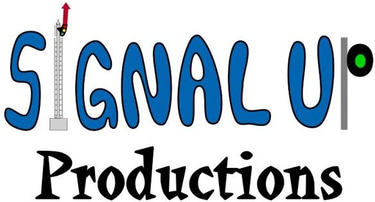Getting my Hands Dirty
Visiting the RRHMA in Silvis was the highlight of this month.
Steven H.
11/19/20245 min read
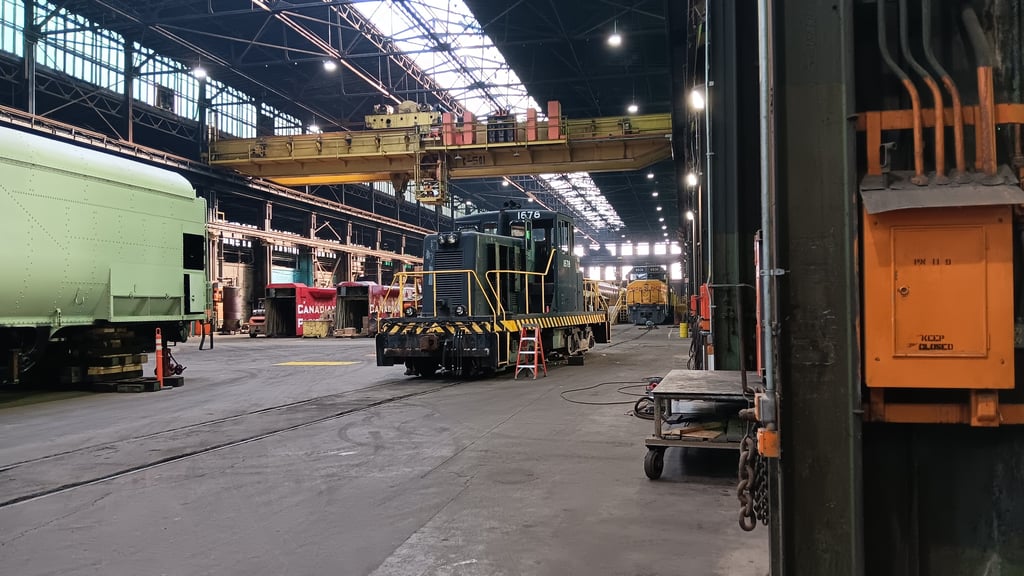

During a chance encounter, I met a fellow at the Springfield, MO train show a couple of months ago who happens to work at the Railroading Heritage of Midwest America in Silvis, IL. This is the organization that is restoring the UP 3985 steam locomotive, among many others. During this meeting, we spoke in length about their progress, plans, and mission. I mentioned my experience volunteering at historic railroad operations, and my desire to help where I could.
He informed me they are always looking for capable volunteers to help in the restoration efforts. I went home and quickly carved out a day on the calendar for a trip up. Silvis is about 4 1/2 hours from my home in Southern Illinois. They started work around 8am on the day I was planning to come up, which meant I had to be on the road by 3am. Ugh! I am not a morning person, but for an opportunity such as this, I would make an exception. To make the matter even more challenging, I would have to work at my job the following morning. So I would only get to stay a few hours, then make the long drive home and be in bed by a decent time.
Not sure what to expect, I came ready to do anything. Having worked on railroad equipment in the past, I knew to wear durable blue jeans and steel toed boots. The organization's facility is leased from National Railway Equipment (NRE), and they share the space. This meant that while work on a really old steam engine was taking place on one side of the building by a volunteer, a somewhat old SD40-2 was being rebuilt by a paid team of craftsmen on the other.
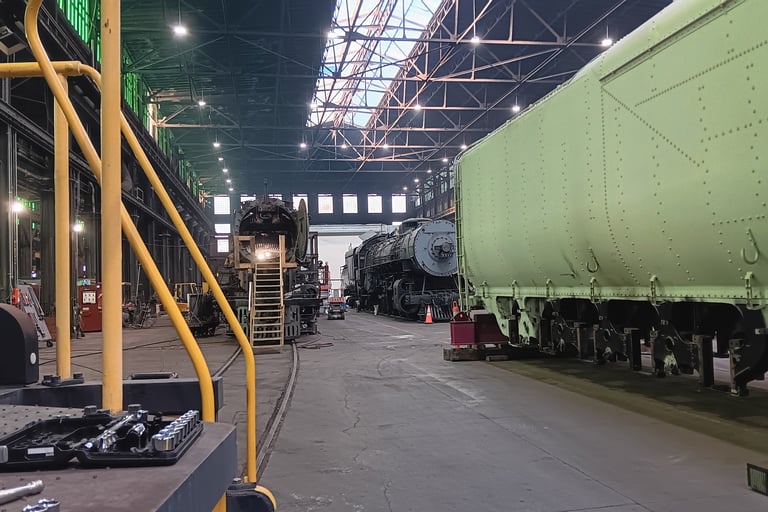

When I arrived, my friend I met at the train show had me fill out the necessary liability release, then gave me a tour of their space. Fun fact, after an entire life of fanning Union Pacific, and trying (and failing) on several occasions to see the DD40X 6936 in person, I finally got the opportunity. 6936 is one of the many locomotives RRHMA owns, and uses it to pull passenger rides on the facility's internal tracks.
The tour ended at the newly acquired US Army 1678, a GE 80 Ton Center Cab. This would be my project for the day. The unit was in storage on a military base for several years. The government donated the engine, and it was shipped in by semi . To make the move, the body had to be lifted off the trucks. After it was unloaded at Silvis, the trucks were placed back under. Other volunteers began reconnecting the traction motor wires in the days prior to my visit.
Since I'm a smaller person, it was my mission to reattach the flexible airline for the truck mounted brake cylinders. This meant I would Army crawl under the fuel tank and squat behind the truck side-frame and traction motor. Some thread goop, a variety of wrenches, and old fashioned elbow grease was all that was needed. Next, apparently a small cable got damaged when the unit was being prepped to load on the semi truck. So I had to trace the conduit back to a junction box, splice new wire, fish it back through the conduit, and reconnect it.
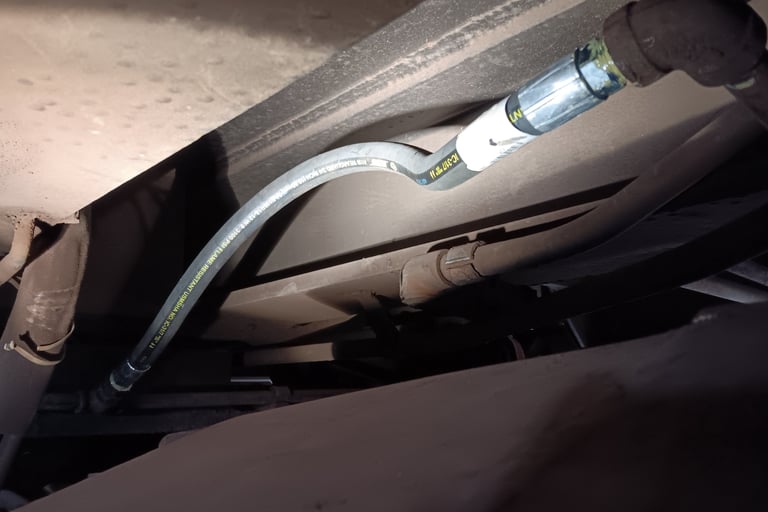

Other volunteers were also helping work on this engine with me. Everyone focusing on a different issue. Since the engine sat for many years unused, there were several small things that needed attention. A leaky brake value, some burned out headlights, an issue with one of the air compressors. All minor things, and many hands made light work of it all. RRHMA clearly has a passion for quality work and is doing some really great things!
Not much has progressed on the St. Marshall Sub. I did start to paint the Busch HO Scale Corn Stalks. I have 3 boxes of these, so hopefully I'll be able to have a selectively compressed Late summer/ early fall that feels like it represents a much larger field. I airbrushed them a brownish yellow color, then painted the base dark brown. Once these get glued down, I plan to sprinkle some ground cover to better hide the bases. Then maybe a barbed wire fence to keep errant cows from wandering.
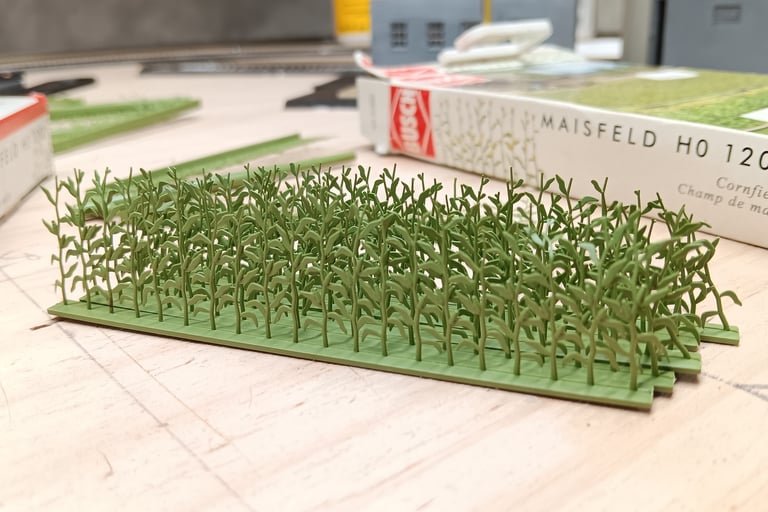

Some new wheels showed up at the hobby shop recently. This is the 2nd run of the Athearn Genesis AC4400. This make a total of 3 of the Genesis 2.0 AC4400's in my fleet. I really like them, but buy mine as the DC version so I can add Loksound 5 and a Scale Sound System speaker.
One thing to note. These models include working ground lights under the cab. Of the 3 models I have, only 1 has the ground lights under both the engineer and conductor side. From the first run, I bought the SP/UP Patch 6289, and CSX 17. This run I got UP 6700. The SP patch model is the only one with both ground lights. The CSX and the UP only have the LED on the conductor side. I reached out to Athearn thinking this might be an error. They assured me this was prototypical, and the models are accurate. I'm still not 100% convinced, but in researching I am now finding prototype examples of engines that don't have any ground lights. Obviously, each railroad can specify which features they want, and ground lights are optional.
I think I just assumed all engines had them, and they are always on both sides of the cab. You know what they say about assuming! So now there's reasonable doubt. Until I actually see UP 6700 and CSX 17 in person, and physically look under the cab, I suppose it's plausible (and at this point probable) that I'm wrong. Up to this point, I can't say I've ever bought an Athearn unit that wasn't accurate. Why start to doubt them now...
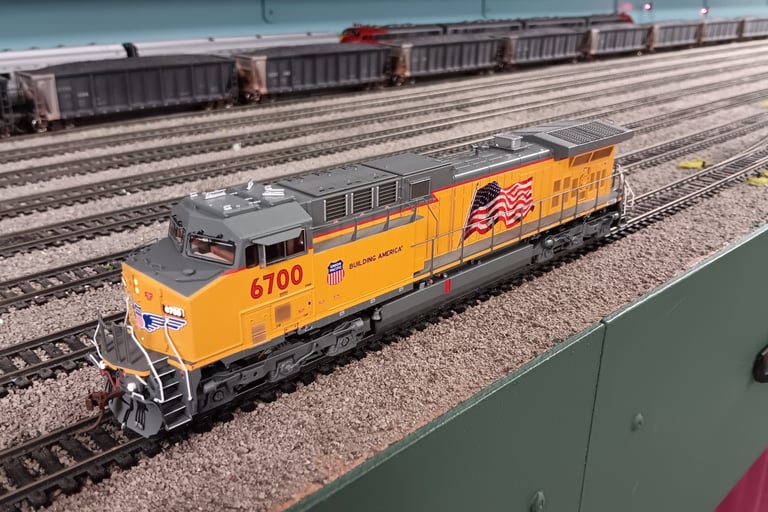

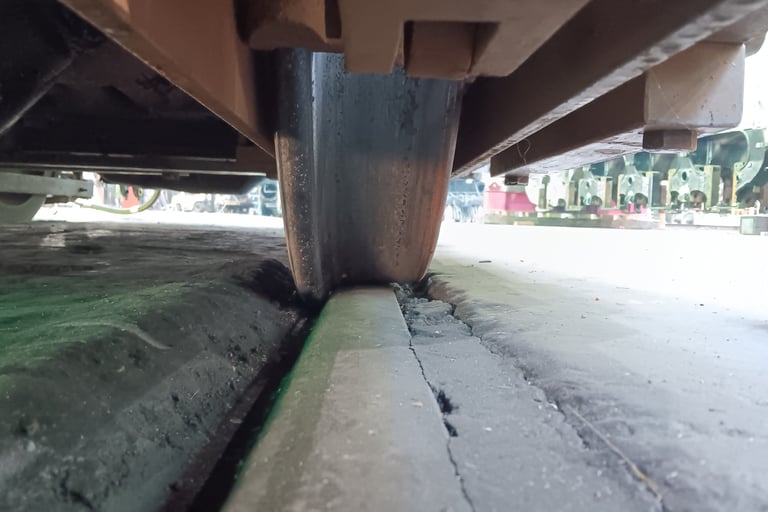

Calling All Train Fans!
Model railroaders and railfans connecting through railroad related content.
© 2024. All rights reserved.
